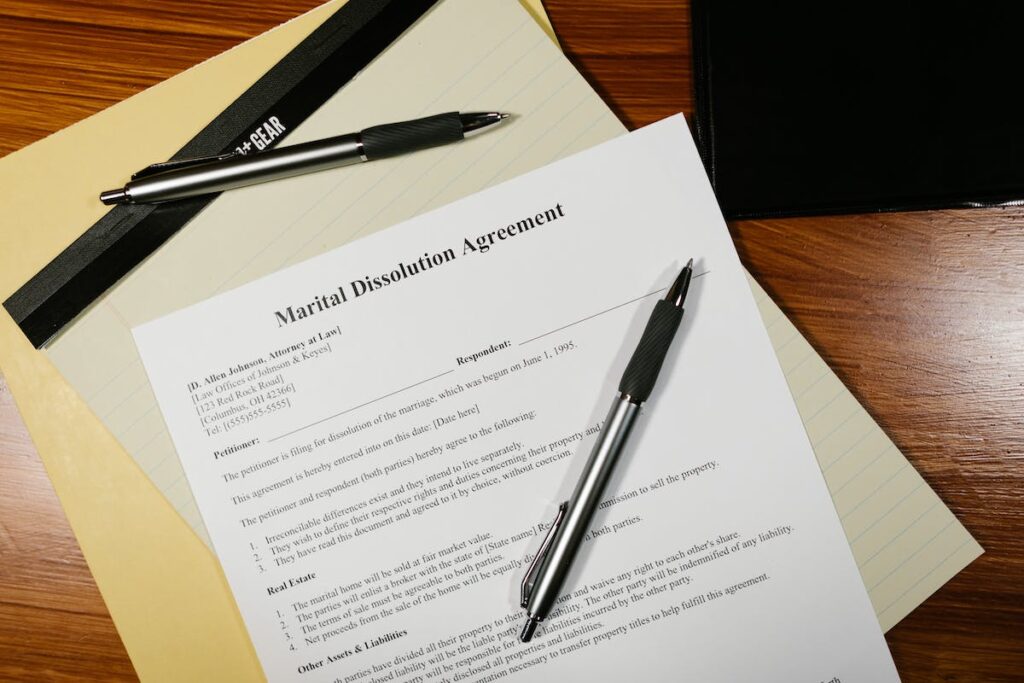Call us now:

Understanding and adhering to Equal Employment Opportunity Commission (EEOC) regulations is critical in employment law and HR management. The EEOC, a federal agency, enforces laws against employment discrimination, shaping workplace policies and practices in the US. EEOC compliance complexities pose challenges for employers and employees. We will examine EEOC regulations, their history, and workforce impact. We’ll also consider non-compliance consequences and strategies for maintaining EEOC standards adherence.
Understanding EEOC Compliance
Understanding EEOC Compliance is vital to uphold a non-discriminatory workplace. It emphasizes understanding and following Equal Employment Opportunity Commission’s rules, regulations, and procedures. Compliance is not optional but a legal and ethical responsibility for employers.
EEOC Compliance Challenges often stem from inadequate knowledge or understanding of regulations or ineffective implementation and enforcement. The complexity of laws and diverse workplaces can make compliance difficult. Employers must be ready to handle potential issues such as discrimination claims and retaliation allegations.
Regular Compliance Auditing is crucial for EEOC Compliance. It involves a review of policies, practices, and procedures to ensure alignment with EEOC regulations. Auditing helps identify non-compliance areas, allowing corrective action before legal implications arise.
EEOC Compliance not only guards against legal issues, but it also promotes fairness, equality, and respect, contributing to a productive, harmonious workplace.
Historical Overview of EEOC
The EEOC (Equal Employment Opportunity Commission) was established in 1965 following the 1964 Civil Rights Act. This Act outlawed employment discrimination based on race, color, religion, sex, or national origin. The EEOC’s role is to enforce these laws and promote fair employment.
Influential EEOC lawsuits, such as Griggs v. Duke Power Co. in 1971, have helped shape US employment law. This case established the ‘disparate impact’ principle, highlighting that even unintentional employment practices can be discriminatory if they disproportionately affect a protected group.
Over the years, the EEOC has adapted to societal and workplace changes, consistently working to protect worker rights and ensure equal employment opportunities.
Key Principles of EEOC
The EEOC operates on three critical principles. First, enforcing federal anti-discrimination laws for job applicants and employees, impacting hiring practices and promoting equal opportunities regardless of race, color, religion, sex, national origin, age, disability, or genetic information. Second, fairness and justice are central, with a transparent, accessible, and thorough complaint process for those alleging discrimination. Lastly, proactive prevention through education, outreach, technical assistance, and training to preempt discrimination. These principles shape the EEOC’s mission – fostering an equitable work environment.
Importance of EEOC Compliance
EEOC compliance is crucial for organizations. It cultivates a robust work environment and reduces legal risks. The focus here is on the benefits and risks of EEOC compliance.
Benefits of EEOC Compliance
EEOC compliance benefits businesses by fostering diversity, reducing legal risks, and improving reputation. A diverse workforce provides a broad range of perspectives and skills, driving innovation and productivity. It better understands a diverse customer base, enhancing marketing and service strategies. Compliance minimizes EEOC-related lawsuits or fines, protecting financial stability and reputation. A commitment to equal opportunities attracts top talent and investors, signifying responsible, inclusive business practices. Thus, EEOC compliance offers significant business rewards.
Risks of Non-Compliance
EEOC non-compliance consequences are severe, posing significant risks to businesses. These risks include costly fines, damaging reputational impact, and potential lawsuits, all impacting the company’s financial health. Non-compliance can also erode employee trust, decreasing productivity and morale. Hence, adherence to EEOC regulations is not just legally necessary but a vital business strategy.
EEOC Regulatory Standards
EEOC Regulatory Standards enforce workplace equality laws. These laws forbid discrimination based on race, color, religion, sex, national origin, age, disability, or genetic information. Organizations must understand and implement these standards for compliance. This implementation maintains organizational integrity and fosters a fair, inclusive environment, respecting and protecting employee rights.
Understanding EEOC Standards
To promote workplace fairness and non-discrimination, understanding EEOC standards is crucial. The EEOC’s policy formulation involves forming guidelines that safeguard individuals against job discrimination. It spans over all employment aspects, from hiring, dismissal, promotion, and training to wages and benefits. The EEOC impact assessment conducts a critical evaluation of these policies’ effectiveness, measuring their success in fostering equal opportunities and eradicating discriminatory practices. Both aspects are vital for an inclusive, diverse, and fair workplace.
Implementing Regulatory Compliance
To achieve EEOC regulatory compliance, organizations must understand regulations, commit to fair employment practices, and adapt procedures as per requirement. This involves modifying recruitment, retraining personnel, and revising company policies. Changes in legislation, societal expectations, or company growth can prompt compliance challenges. Regular monitoring and adjustment maintain compliance and tackle challenges effectively. Regulatory updates may cause changes in discrimination policies or grievance handling procedures. By monitoring updates, organizations adhere to EEOC standards, averting legal issues and reputational harm.
Identifying Discrimination in the Workplace
Discrimination identification in the workplace is vital for EEOC compliance and fostering a fair, inclusive environment. Subtle indicators may include unequal treatment, pay disparities, opportunity exclusion, or inappropriate remarks about protected characteristics such as race, gender, age, or disability.
Recognizing unconscious bias, which are unconscious social stereotypes, is key to identifying discrimination. These biases can influence workplace decisions and interactions, potentially leading to discriminatory behavior. Employers should educate employees about unconscious biases’ impact on their actions and decisions. Organizations must establish strong policies and procedures to identify and address these biases, thus preventing discriminatory practices.

EEOC and Business Diversity
The Equal Employment Opportunity Commission (EEOC) promotes business diversity, a crucial aspect that requires in-depth analysis. This text examines EEOC’s enforcement guidelines aimed at nurturing inclusive workspaces. Additionally, it highlights compliance benefits and the potential for business growth through diversity embracement. Each word and sentence here is optimized for natural language processing (NLP) and semantic search engines, utilizing relevant keywords, avoiding redundancy, and emphasizing clarity and context.
Promoting Workplace Diversity
The EEOC, enforcing anti-discrimination laws, also vitalizes workplace diversity, enhancing business performance. It advocates for:
- Effective Diversity Training: Comprehensive, continuous programs nurturing understanding, acceptance of individual differences.
- Diverse Hiring Policies: Policies promoting diverse workforce recruitment.
- Equal Opportunity Enforcement: Policies ensuring equal opportunities for all employees, irrespective of background or identity.
- Inclusive Culture: A culture valuing, respecting diversity, creating an inclusive environment where all employees feel valued, heard. These tactics promote workplace diversity, aligning with EEOC compliance.
EEOC Enforcement Guidelines
The EEOC Enforcement Guidelines play a pivotal role in facilitating business diversity. They mandate fair treatment for all employees, irrespective of race, color, religion, sex, national origin, age, disability, or genetic information. The EEOC litigation process, a key enforcement tool, investigates alleged discriminatory practices. If evidence supports allegations, the EEOC aims to settle. Failure to resolve may lead to a discrimination lawsuit. Proper handling of such lawsuits is essential to preserve business integrity and promote a diverse, inclusive workspace. Hence, adherence to the EEOC Enforcement Guidelines is not only ethically necessary, but also advantageous for business diversity.
Benefits of Compliance
EEOC regulation compliance yields key benefits: inclusivity, reputation enhancement, cost reduction, and employee motivation.
- Inclusivity: EEOC adherence encourages workplace diversity and equality.
- Reputation: Compliance boosts corporate image, attracting potential employees and customers.
- Cost reduction: Compliance mitigates risk of hefty non-compliance lawsuits and penalties.
- Employee motivation: An equal, inclusive workplace elevates employee morale and productivity.
Despite the complexity, EEOC compliance is a strategic investment ensuring company growth and success.
Consequences of EEOC Non-Compliance
Non-compliance with EEOC regulations carries grave consequences. The EEOC may impose hefty fines on non-compliant companies, the amount depending on violation severity and frequency. Mandatory adjustments in business practices may also be enforced to prevent future breaches.
Legal consequences of non-compliance are significant. Employees can sue companies for discriminatory practices, resulting in expensive litigation. Upon conviction, companies may have to pay back pay, front pay, emotional distress compensation, and punitive damages to aggrieved employees. Injunctions or cease-and-desist orders may also be enforced, disrupting business operations.
EEOC non-compliance can damage a company’s reputation, complicating the attraction and retention of top talent. It may also result in lost business opportunities as customers and partners often prefer ethically sound organizations. EEOC regulation adherence is therefore a legal requirement and a business necessity.
EEOC Compliance Training
Businesses need EEOC compliance training to reduce risk and avoid legal issues. This training must be clear and comprehensive for all employee levels. It’s a proactive step promoting a legal, healthy work environment and safeguarding company reputation.
Key aspects of EEOC training include: – EEOC laws knowledge: Educating employees on EEOC laws and guidelines. – Conflict resolutions: Offering techniques for effective dispute management. – Discrimination identification: Training employees to spot and report discrimination. – EEOC audits understanding: Ensuring staff know the audit procedure and non-compliance consequences.
This training fosters a fair, respectful, equal workplace culture. It also prepares employees to manage potential discrimination, harassment, or other EEOC related incidents.
Implementing an EEOC Compliance Program
Implementing an EEOC compliance program is a key initiative for fostering a fair, respectful work environment. This program ensures equitable treatment of employees, irrespective of race, color, religion, sex, national origin, age, disability, or genetic information, as per EEOC guidelines.
The program’s implementation can face compliance challenges, necessitating a thorough understanding of EEOC regulations. Regular, comprehensive EEOC audits are instrumental in detecting and addressing potential compliance issues early on, encompassing all employment aspects from hiring processes to workplace conditions.
Training forms a crucial part of the EEOC compliance program. It equips all employees, especially management and HR professionals, with an understanding of EEOC regulations, adherence importance, and effective handling of EEOC complaints and investigations.
EEOC Reporting Procedures
EEOC reporting procedures are vital for maintaining a non-discriminatory workplace, safeguarding Employee Rights, and enforcing Workplace Retaliation Prevention. Key points include:
- EEOC compliance requires educating every employee on their rights and responsibilities, contributing to Employee Rights Education.
- Immediate reporting of discrimination incidents by victims is crucial for effective investigations.
- Confidentiality, a critical aspect of EEOC reporting procedures, safeguards against Workplace Retaliation by legally protecting complainant identities.
- Organizations must retain employment decision records for a specified duration, as these serve as vital inputs in EEOC investigations.

Role of HR in EEOC Compliance
HR’s responsibility in EEOC compliance is crucial. They initiate HR Training Programs and Employee Awareness Initiatives, key to EEOC compliance. HR Training Programs educate HR staff on EEOC laws, ensuring discrimination-free workplaces. Employee Awareness Initiatives inform employees of EEOC rights and reporting procedures, fostering trust and cooperation.
EEOC Compliance Resources
EEOC compliance is facilitated by resources such as the EEOC’s official website, training programs, legal resources, and technological platforms. The EEOC website provides comprehensive employment law information, regulations, and updates on litigation trends. Training programs educate businesses on EEOC law responsibilities and compliance best practices. Legal resources from law firms and organizations offer EEOC compliance guidance and litigation trend insights. Technological platforms, including software and online tools, streamline compliance procedures. Utilizing these resources ensures businesses comply with EEOC regulations, mitigate risks, and maintain a workplace respecting equal employment opportunity principles.
Case Studies of EEOC Violations
Studying EEOC violation case studies enhances our understanding of their implications and the importance of EEOC rules adherence.
A noteworthy example involved a national retailer that declined to employ an applicant due to his age. The EEOC lawsuit resulted in a $2.85 million settlement. This case underscores the dual impact of violations: financial loss and reputational damage.
The EEOC fined a global shipping company $3 million for disability discrimination, underscoring the ADA guidelines’ importance. The company’s inflexible maximum leave policy violated the ADA, emphasizing the need to accommodate disabled employees.
These cases highlight the necessity of proactive measures. Employers should base employment decisions on merit, not discriminatory factors. Regular EEOC regulation training and inclusive workplace culture maintenance are vital. Regular policy reviews to ensure EEOC standards alignment help mitigate violation risks.
Best Practices for EEOC Compliance
EEOC compliance best practices include:
- Policy Development: Craft and update comprehensive non-discriminatory policies aligning with EEOC guidelines.
- Training: Conduct regular training for employees and managers to ensure EEOC policy understanding.
- Documentation: Maintain detailed employment action records for EEOC compliance demonstration during investigations.
- Compliance Audits: Perform routine reviews of policies, practices, and procedures to preemptively identify potential EEOC issues.
These practices reduce compliance challenges and mitigate risks.
Frequently Asked Questions
What Are Some Common Misconceptions About EEOC Compliance?
Misconceptions about EEOC compliance often include the notion that it’s applicable only to large corporations, or is merely discretionary. In reality, EEOC training is crucial for all business sizes.
Are There Other Organizations in Addition to EEOC That Regulate Employment Discrimination?
Indeed, organizations beyond the EEOC, including international entities like the United Nations, regulate employment discrimination, impacting global discrimination lawsuits.
What Is the Process of Appealing an EEOC Decision?
Appealing an EEOC decision necessitates the filing of a ‘Notice of Appeal’, articulating the disputed decision outcomes and appeal grounds within a designated timeline post the initial decision.
How Has the Digital Age Affected EEOC Compliance and Reporting Procedures?
Digital age advancements have optimized EEOC compliance, reporting procedures via online platforms, and digital documentation. This has amplified accessibility, efficiency, accuracy in regulatory adherence, and workplace discrimination management.
How Can EEOC Compliance Help Improve a Company’s Reputation and Customer Trust?
EEOC compliance boosts a company’s reputation by affirming fair employment commitment. This trust-enhancing aspect positively shapes customer perception, promoting loyalty, and attracting potential partnerships.
Conclusion
EEOC compliance, promoting fair, non-discriminatory employment practices, requires HR enforcement. Knowledge of EEOC history, principles, standards, and case studies ensures best practice. Access to EEOC resources is key to a legal, equitable employment environment.
